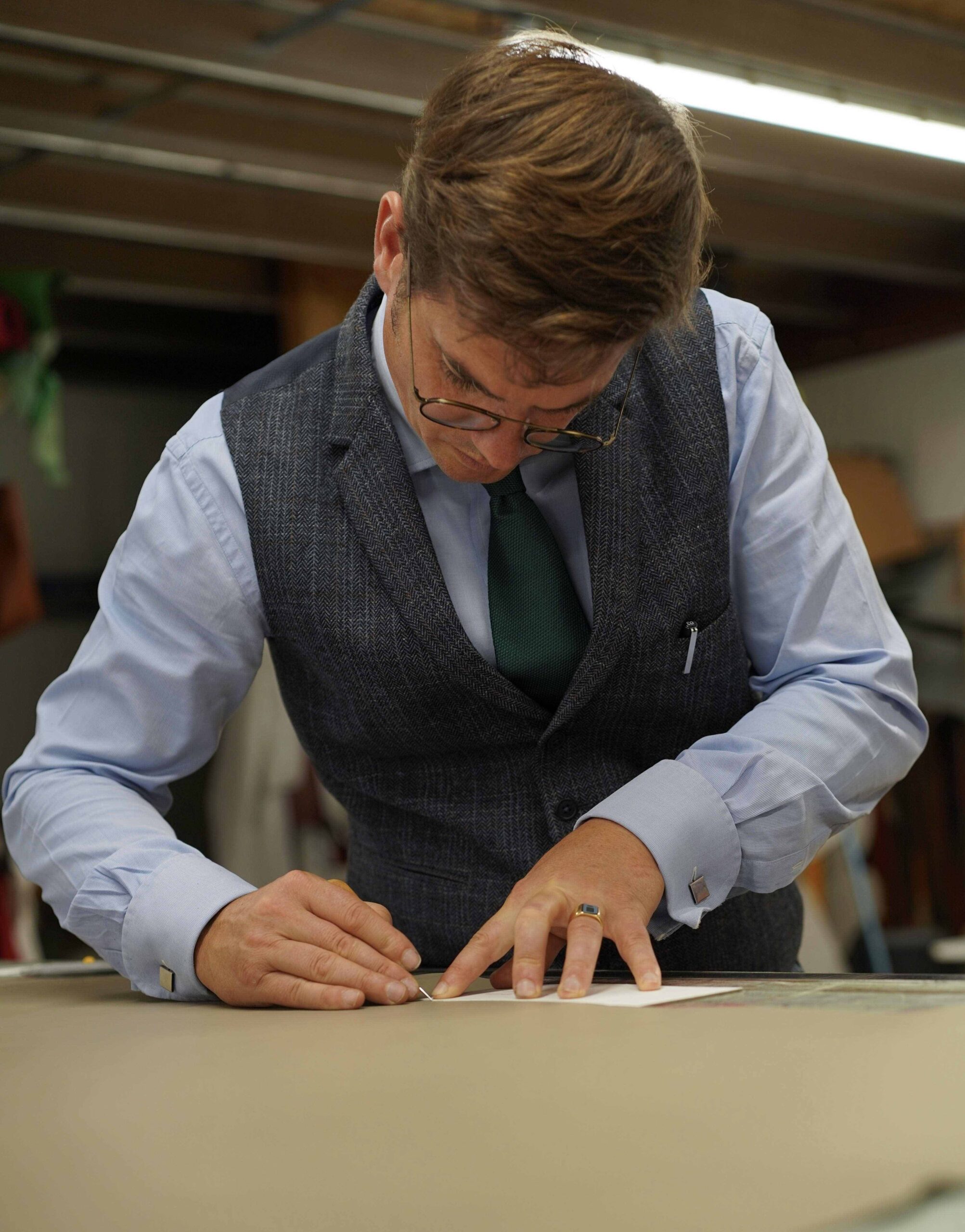In 2020, this native of Limoges, who grew up in the Charente and south of Bordeaux, took over a leather goods workshop, specialising in travel, hunting and tableware accessories for professionals. Today, after refocusing on wine, sales have tripled. Better still, since this year, private customers have been welcome. To them, La Vie de Château…
Why did you go into leather goods?
Fisrt, for a while, I trained in design. Second, years later, as my children grew up and I travelled more and more for my work in the aerospace and defence industry, I felt the need to settle down. Thanks to some friends, I heard about an opportunity to take over a leather goods workshop just outside Gironde… That’s when I discovered leather. It’s an age-old material that appeals deeply to the senses and allows you to create highly personal, long-lasting products. I was won over.
And, you had to be trained…
Of course I did. First, alongside the former owner of the premises: for years he had run a major leather goods workshop in Bordeaux, before setting up his own here. Then, on my own, as Covid was obliged to do, or with my long-standing collaborator. It wasn’t great timing. But the die had been cast, the purchase was a done deal…
How do you work?
Creating accessories for wine and spirits is our core business. I’m talking about accessories. The term is important. The star product is still the bottle. It doesn’t have to be our packaging. That’s why we prefer a simple, functional design. A subtle blend of elegance, utility and simplicity. Our ‘Ring’, ‘Mesh’ or ‘Double’ bottle-holder, like our emergency ‘Jan’ corkscrew, are creations that are both beautiful and easy to make, in a sense, because they use as little material as possible, so as not to steal the limelight from the bottled wine or spirit, or to be wasteful. Simple assembly, savings on supplies, very special finishes…: in these areas, we have acquired real and recognised expertise.
What type of leather do you use?
Mostly cowhide, coloured and made rot-proof by the action of vegetable tannins. So it’s an eco-responsible material, sourced mainly from France and Italy, and capable of developing a patina. There’s a real sense of sustainability here. The treated hides arrive in our 190 m2 workshop. They are then sorted, cut, split to separate the full-grain leather from its undressed leather, then adjusted, mounted and stitched, before finishing, marking and, finally, packaging. Everything is done here, by six hands, between cows and vines.
Who are your customers?
Historically, our business has been aimed at professionals: the hotel and restaurant trade, golf clubs to some extent and, above all, wine and spirits houses. That’s how the person I took over the workshop worked. We continued in this vein until this year. It seemed to us that reaching out to private individuals offered interesting development prospects. So La Vie de Château is now aimed at them, with my childhood home in the Charente as the logo. A big step has been taken. And it’s only the beginning. Today, the brand has a dozen references, but over the next six months, three or four new products should be launched. Other colours, more innovative leathers…: we’re keen to come up with even more creations for our customers and therefore our retailers, like Athenaeum.

